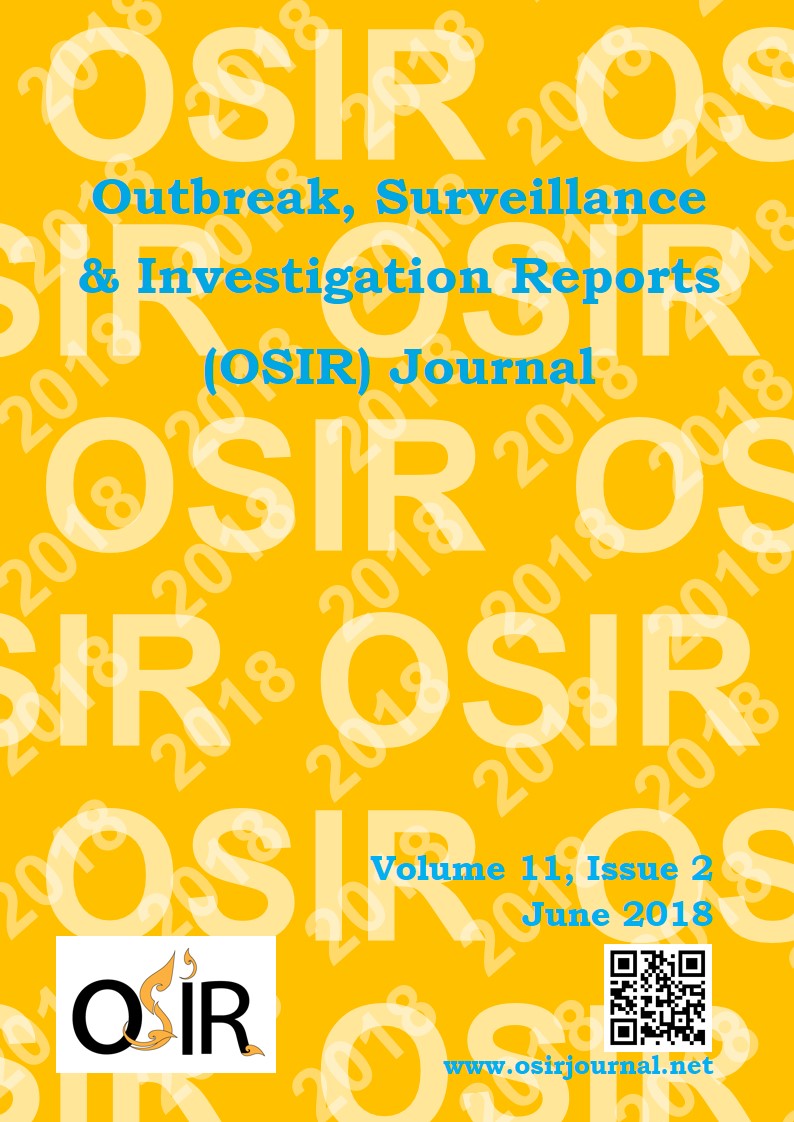Identifying Female Sex Worker Sites and Gaps of HIV Prevention Programs Using a Programmatic Mapping Method in 9 Provinces of Thailand
DOI:
https://doi.org/10.59096/osir.v11i2.263061Keywords:
programmatic mapping, HIV services, female sex worker, Thailand, size estimationAbstract
Programmatic mapping is an internationally recommended and systematic method of providing crucial data for human immunodeficiency virus (HIV) prevention programs. It identifies the “hot spots” or gathering sites of key populations such as female sex workers (FSWs) and estimates their population size. This mapping was conducted in nine selected provinces of Thailand during 2015-2016 to identify and characterize hot spots of FSWs and gaps of HIV prevention. The mapping included two major steps: “site identification”, interviewing various key informants in and around the areas to extensively compile lists of potential hot spots; and “site validation”, visiting these hot spots, using a mobile application to geographically map their locations, and collecting data on characteristics and estimated number of FSWs at each site. In the nine selected provinces, 1,039 explicit and non-explicit venues where FSWs employed were successfully mapped. Of which, 357 (34%) had no available HIV service. The estimated number of FSWs was 15,092, of which approximately 24% were working in venues where HIV services were not available. This mapping identified areas where HIV service delivery is needed and the number of FSWs that the services should accommodate thus allowing for the establishment of strategic programs and planning of budgets. It is therefore recommended that this mapping program be expanded and regularly conducted.
References
National AIDS Management Center. Thailand AIDS response progress report, 2015. Nonthaburi: Ministry of Public Health; 2015 [cited 2018 Mar 29]. <http://www.unaids.org/sites/default/files/country/documents/THA_narrative_report_2015.pdf>
National AIDS Management Center. Thailand AIDS response progress report, 2017. Nonthaburi: Ministry of Public Health; 2017.
Phuengsamran D. Higer-risk female sex workers and access to HIV prevention services: key factors to ending AIDS in Thailand. In: Population and social diversity in Thailand, 2015. Nakorn Pathom: Institute for Population and Social Research; 2015. p. 97-110.
United Nations Programme on HIV/AIDS. UNAIDS terminology guidelines. 2015 [cited 2018 Apr 1]. <http://www.unaids.org/sites/default/files/media_asset/2015_terminology_guidelines_en.pdf>
Vipada M, editor. Standard operating procedure for HIV/STI prevention and sexual and reproductive health services for female sex workers. Bangkok: Bureau of AIDS, TB and STIs; 2013. Thai [cited 2018 Mar 29]. <http://www.cqihiv.com/book_dsc%5CB_DiseasesTouch-24.pdf>
Sangwanprakaisang T. Sex establishments and sex workers in Thailand 2015, Bangkok: Bureau of AIDS, TB and STIs; 2015.
Manopaiboon C, Prybylski D, Subhachaturas W, Tanpradech S, Suksripanich O, Siangphoe U, et al. Unexpectedly high HIV prevalence among female sex workers in Bangkok, Thailand in a respondent-driven sampling survey. Int J STD AIDS. 2013 Jan;24(1):34-8. Epub 2013 May 6.
Nhurod P, Bollen LJM, Smutraprapoot P, Suksripanich O, Siangphoe U, Lolekha R, et al. Access to HIV testing for sex workers in Bangkok, Thailand: a high prevalence of HIV among street-based sex workers. Southeast Asian J Trop Med Public Health. 2010 Jan;41(1):153-62.
Phuengsamran D, Janyam S, Sherwood J DM. PrEP Acceptability among female sex workers in Thailand: key research findings. Bangkok: TreatAsia; 2014.
Downloads
Published
How to Cite
Issue
Section
License
Copyright (c) 2023 Outbreak, Surveillance, Investigation & Response (OSIR) Journal

This work is licensed under a Creative Commons Attribution-NonCommercial-NoDerivatives 4.0 International License.









